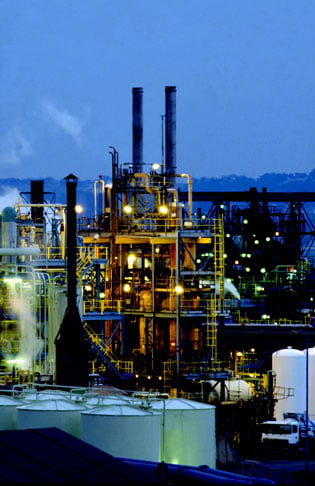This guest blog post was written by Adam Krolak, marketing product manager with Honeywell Process Solutions.
Level is among the most frequently measured process variables in industrial plants. Level readings are used for local indication, process automation and visualization in control systems. Additionally, they are crucial for managing inventory and enforcing safety limits for overfill, leak detection or dry-run protection of pumps. Other applications range from automated ordering systems, to communicating low limits to suppliers to streamline the logistic process.
With so many level measurement technologies currently available, it can be difficult for end users to select the right solution for their particular application. Parameters such as changes in temperature, pressure, density, dielectric constant or the measured material can all affect the technology choice. Other important considerations include agitation, foaming, corrosive properties, dust and construction of the tank. The desire to use a single type of instrument for all level measurements is another common factor. Lastly, the selection of a level measurement device may hinge upon unit price, lifecycle cost, ease of mounting, maintenance, accuracy, relevant certifications, and ease of integration into the control system.
Rising labor costs and the need for uninterrupted production are driving interest in electronic measurement technologies. With no moving parts and built-in diagnostics, these solutions enable lower maintenance costs and higher reliability. They also provide significantly lower lifecycle costs than traditional mechanical and electromechanical level instruments.
Today, guided wave radar (GWR) based on time-domain-reflectometry is one of the fastest growing electronic technologies for level measurement in the process industries. GWR sensors are handling applications that previously employed technologies such as capacitance, hydrostatics or ultrasonics. Their common accuracy specification is ±10 mm to ±5 mm (basic models) and ±3 or ±2 mm (advanced models), with a typical repeatability of ±1 mm.
A GWR sensor is mounted at the top of a tank facing down, and sends electromagnetic pulses toward the measured product. It uses the reflected signal to calculate the level in the tank. The measured signal travels along a waveguide that can be made of a stiff metallic rod, flexible wire, or a coaxial construction. GWR sensors are available with certification for hazardous areas and with safety-integrity-level ratings.
Experience has shown that GWR technology offers key advantages in a wide range of industrial applications. For example, the GWR measuring signal and reflection are concentrated around the waveguide or inside the waveguide (in the coaxial option), and this narrow path of signal propagation minimizes the potential impact of stray signals caused by construction elements or obstacles in the tank. The concentration of the signal along the waveguide results in a cleaner, stronger signal of the echo reflection. Plus, without the need for an antenna, the GWR’s waveguide can be installed easily through narrow mounting holes or nozzles.
The GWR solution also offers benefits in applications subject to dust, foam and heavy vapors. Where there is a need for interface measurement (such as oil on water), it allows the measuring signal to penetrate the upper product and provide measurement of the lower product. The waveguide can be mounted on an angle or even formed to follow the contours of an irregularly shaped tank.
Like any technology, there are limiting factors to the use of GWR devices. Because their waveguide is in constant contact with the product in the tank, the potential for corrosion exists. Automation suppliers address this concern by offering a variety of process connections and waveguides constructed of corrosion-resistant materials such as type-316 stainless steel, high-nickel alloys or rods coated with perfluoroalkoxy (PFA) polymer.
Movement of the product in the tank can also subject the waveguide to pulling and bending forces acting upon it. However, readily available calculation formulas enable checking that the forces are within the operating limits for a given type and length of waveguide.
GWR deserves consideration for a wide variety of level measurement applications and, indeed, is an excellent fit for many demanding services. The increasing availability of flexible configurations, selection of probes, materials, process connections, certifications, and competitive pricing make it a natural and preferred choice for many applications.
About the Author
Adam Krolak is a marketing product manager for the Honeywell Process Solutions SmartLine level transmitter portfolio. Adam has over 15 years of experience in field instrumentation, including research and development at Honeywell and as a Service Manager at Endress+Hauser. Adam holds a master’s degree in process automation and a management degree. He is an author of several patents and is an active member of the Institute of Electrical and Electronics Engineers (IEEE).



